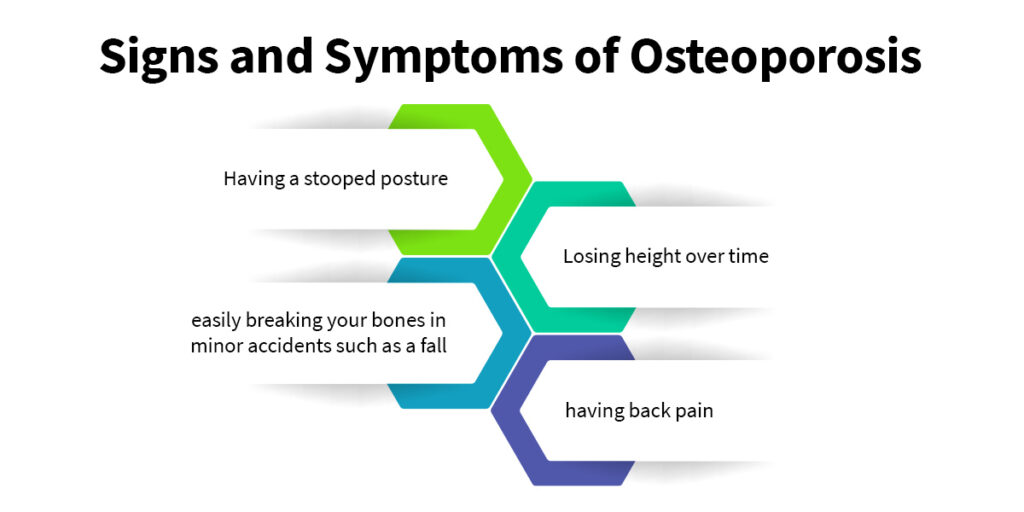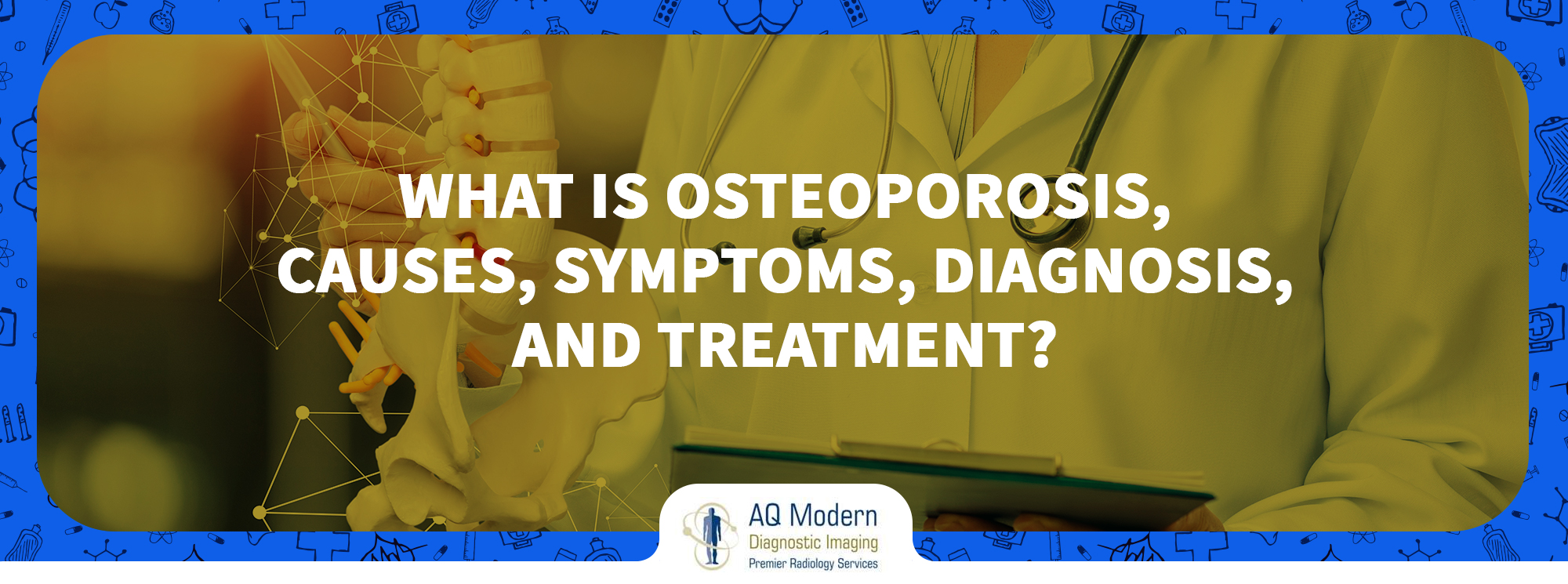Most of us are aware of osteoporosis and have a general idea that it’s related to bone health. Osteoporosis causes weakening of the bones, especially in the latter part of life, which can lead to fracture. Even usual movements such as coughing or bending can cause a fracture.
Fractures mostly occur in the hip, spine, or wrist. The condition is common among men and women both. However, it mostly affects older women who are past their menopause. There are several precautions that help avoid developing the condition and strengthen the bones to prevent weakness and live a healthy life. Find out about osteoporosis in detail below:
Defining Osteoporosis
Osteoporosis means “porous bones.” Osteoporosis is the main cause of fractures in the US annually in almost 2 million cases. The condition becomes dangerous in older people who get a hip fracture due to osteoporosis. The long period of recovery can lead to other complications such as developing pneumonia or blood clots.
According to the International Osteoporosis Foundation (IOF), over 10 million people suffer from osteoporosis in the US, out of which 80% are women. The condition is more prevalent in Asian women. According to health experts, women are at a higher risk of contracting osteoporosis due to the hormonal changes after menopause that lead to losing bone mass more quickly. Another reason could be that women tend to have less dense and lighter bones. Read more about WHAT IS BONE DENSITY TEST? WHY DO YOU NEED DEXA SCAN?
What Causes Osteoporosis
Our bones are continuously in the process of breaking down and getting replaced. This process is known as bone remodeling. Bone mass is the highest in the mid to late 20s.
The main reason for osteoporosis is the breaking down of the bones and not getting replaced by new ones. Also called bone loss, it starts developing in the mid-30s due to the loss of calcium in the bones.
Calcium is responsible for making bones stronger. Another reason for increased bone loss in women is due to a decline in estrogen production in the body. Estrogen is responsible for keeping calcium intact in the bones.
Loss of bone density is a natural part of aging as well. However, it becomes a problem leading to osteoporosis and eventually fractures in certain cases. You are at high risk of developing osteoporosis if you have a small frame or you’re thin, you are Asian or white, you have removed your ovaries before 40 years of age, you lack an active lifestyle and smoke or drink excessively, and if there is a history of hip fractures in your family.
Certain health conditions can also lead to osteoporosis. These include Cushing’s syndrome, kidney disease, or an overactive thyroid. Bone loss can also increase if you have taken steroids such as Glucocorticoids. Other reasons for bone loss include long-term immobility and anti-seizure drugs.
Signs and Symptoms of Osteoporosis

Osteoporosis evolves gradually, so there might be no clear symptoms of the disease in the early stages. Most people remain unaware until they have a fracture. Once the bones become weak, you can experience the following symptoms:
- Having a stooped posture
- Losing height over time
- Easily breaking your bones in minor accidents such as a fall
- Having back pain
also read: Four stages of osteoporosis
Diagnosis of Osteoporosis

Your doctor will take your medical history and recommend getting a bone density scan, among other tests, to make a diagnosis. During the exam, you will be asked about your age, family medical history, and lifestyle habits, including exercise regimen and eating and drinking habits.
Some medications weaken the bones, so it is important to let your health practitioner know of all the medicines you are taking. The doctor will check if you have lost height and check your spine. A spine that curves forward more than usual is a sign of a spinal fracture caused by osteoporosis.
A bone density scan from a reliable diagnostic center such as AQ Modern Diagnostic Imaging is non-invasive and gives accurate and quick results. The scan reveals the mineral concentration in the spine, hip, and forearm bones. Checking the scan, the doctor can evaluate if you have low bone density, which is a sign of osteoporosis.
Treatment for Osteoporosis
Treatment for osteoporosis helps in various ways. It can prevent fractures, reduce the pain, slow the development of the condition and allow a person to maintain their bone density. There are several treatments available for osteoporosis that help a person continue living actively without the fear of getting a fracture. Following are some treatments available for osteoporosis that can also help prevent the condition.
Drug Therapy
Drug therapy includes taking antiresorptive drugs that reduce the risk of fractures and slow bone loss. These can include estrogen agonists that are effective in women to reduce spine fracture after menopause.
Calcitonin helps manage pain from fracture and prevents spinal fracture. Parathyroid hormone is an approved hormone to stimulate bone formation in people at a higher risk of fractures.
It is important to only take bone-maintenance drugs after consulting with your doctor and letting them know of other medications you are taking. Your doctor may want to adjust the dose or switch to another drug in the same category to avoid a negative effect on the bones.
For instance, in the case of taking bisphosphonate, your doctor may change your drug every five years. Long-term use can prevent thigh bone fracture.
Hormone-Replacement Therapy (HRT)

Hormone replacement therapy includes taking estrogen or a combination of estrogen and progestin to treat osteoporosis. However, HRT is a risky treatment as, according to research, it can lead to breast cancer, heart disease, or stroke over time. Doctors generally do not recommend HRT as its risks outweigh the benefits.
Prevention of Osteoporosis
Certain lifestyle changes can reduce your risk of osteoporosis and help you live a healthy and active life. Following are precautions to take to avoid osteoporosis:
Adequate Vitamin D and Calcium Intake
It is important to take adequate calcium as it is vital for the bones. The recommended dose of calcium for adults above 19 years of age is 1000 mg daily. For adults above 71 and women over 51 years of age, the daily intake of calcium should be 1200 mg.
Common dietary sources of calcium include green vegetables such as broccoli and kale, dairy foods such as yogurt, milk, and cheese, fish with soft bones, and nutritious breakfast cereals.
Taking calcium supplements is another option. Another important vitamin for bone health is Vitamin D. It helps absorb calcium in the bones. Food sources for vitamin D include saltwater fish, fortified foods, and liver. Sun exposure is also a good source of vitamin D, and doctors recommend regular moderate exposure to sunlight in the early morning hours.
Other ways to prevent osteoporosis include limiting alcohol intake, avoiding smoking, exercising regularly to strengthen the muscles, and promoting flexibility through yoga which can prevent the risk of fractures.
Falling and getting a fracture, especially in older adults, can lead to devastating consequences and health complications. To prevent falling, remove hazards to avoid tripping such as rugs, install grab bars in bathrooms, have your eyesight tested regularly, avoid walking in the dark, and ensure your medication is not causing dizziness.
Conclusion
Osteoporosis is a serious and prevalent condition, especially affecting older women. If the doctor suspects it, they will recommend a bone density scan. AQMDI is one of the leading women’s imaging specialists, offering a wide range of safe and effective diagnostic procedures that give accurate results for a timely diagnosis and effective treatment plan.

